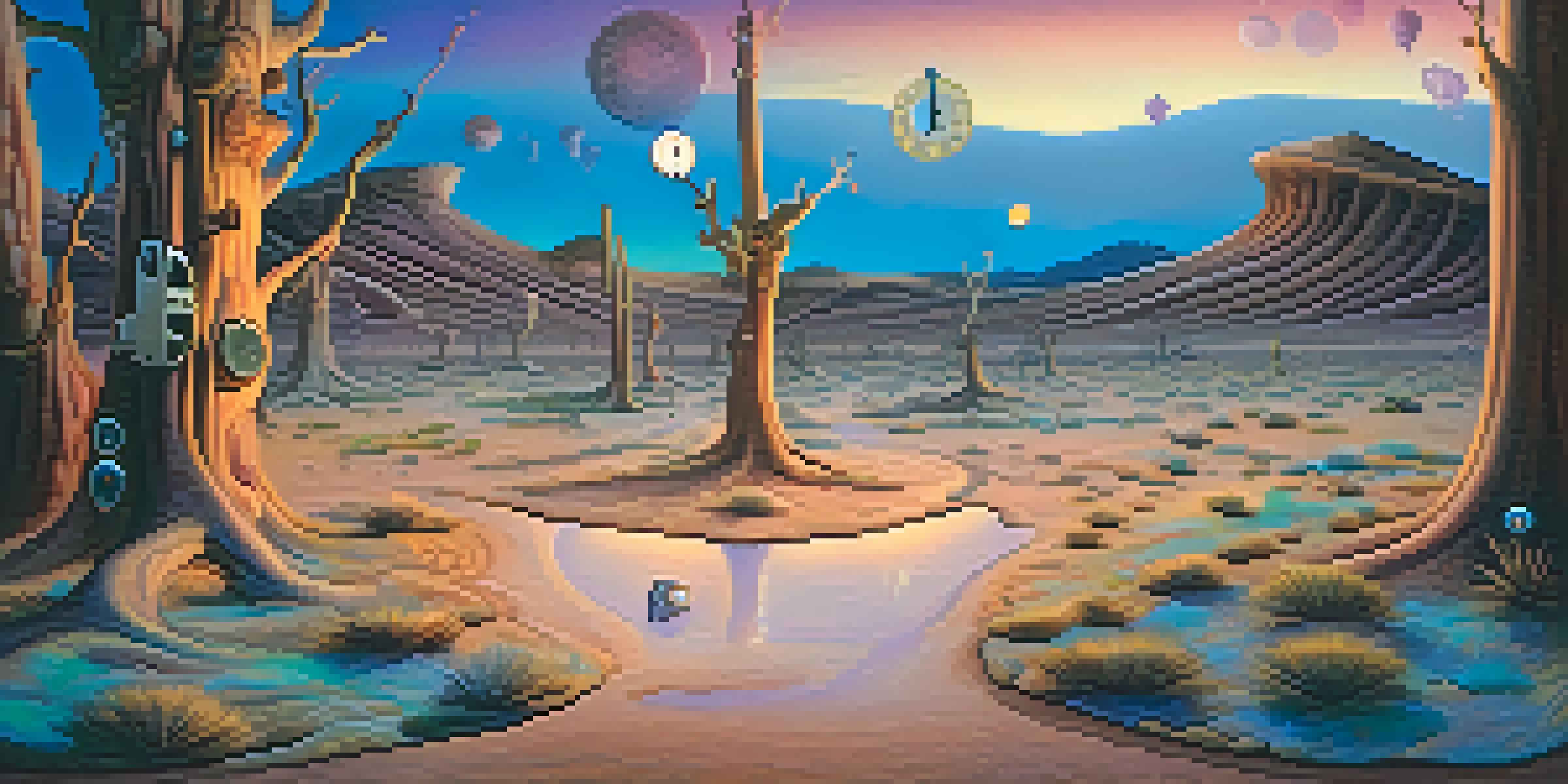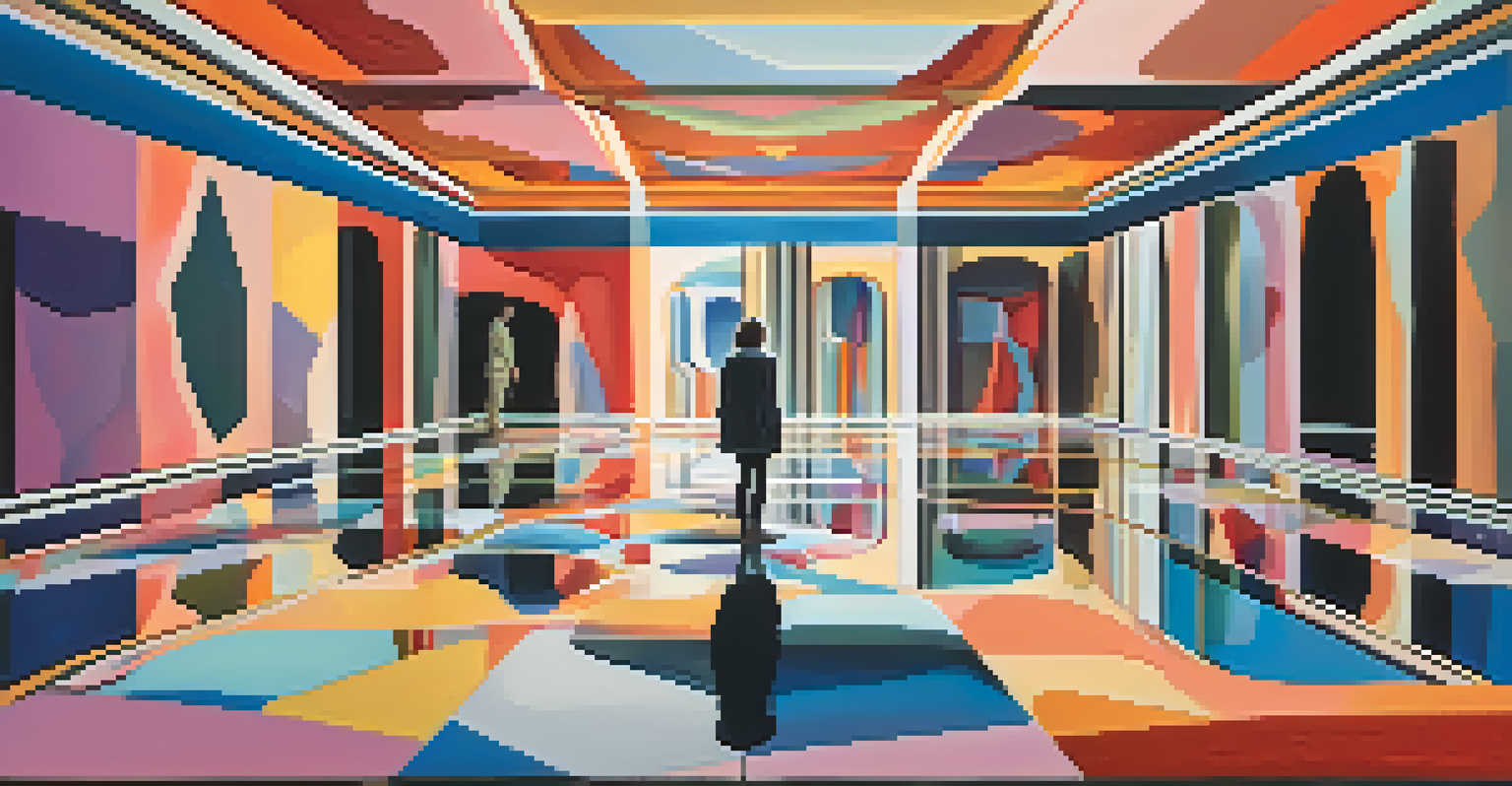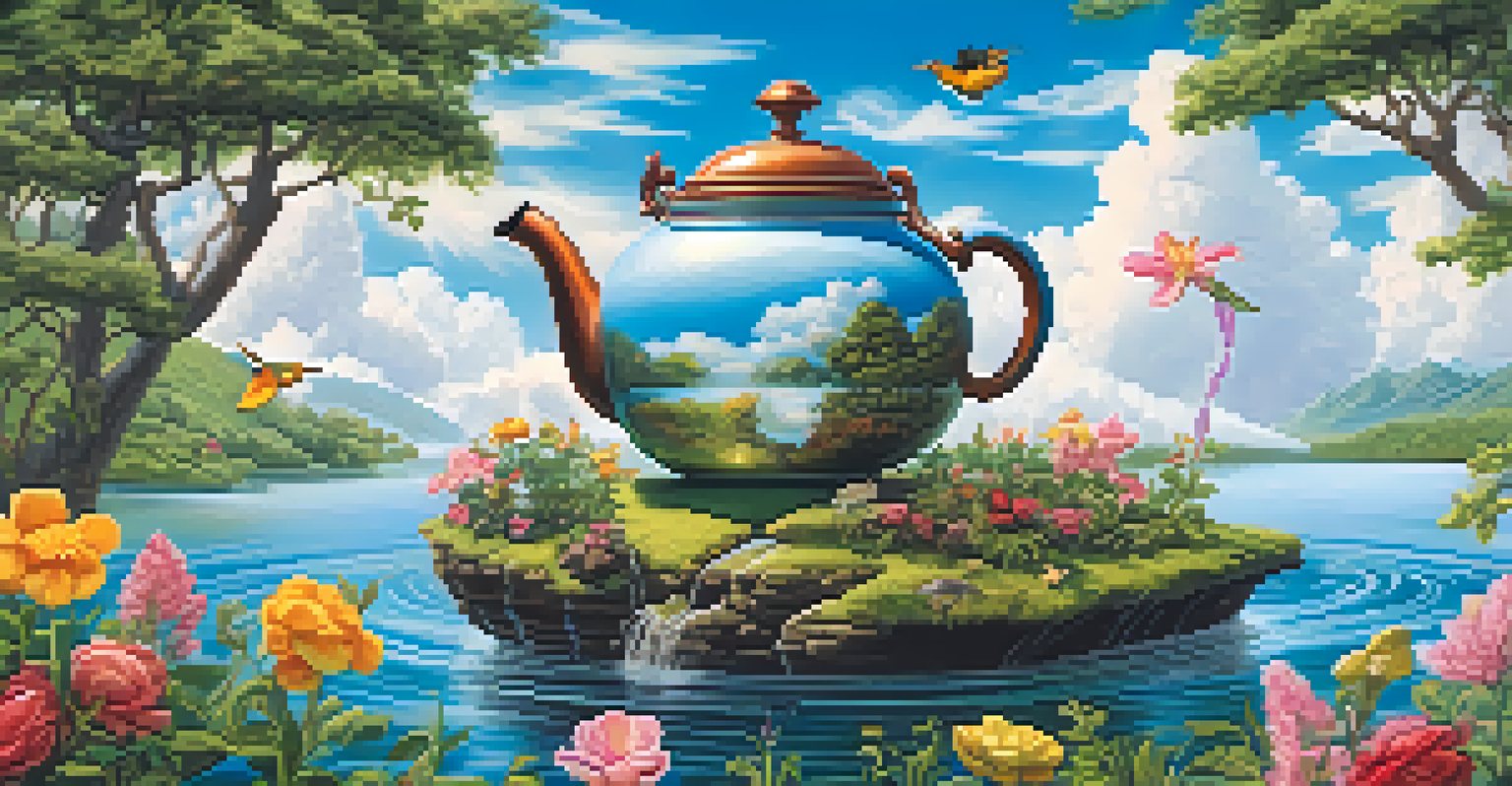Surrealism: Exploring the Depths of the Human Psyche

Understanding Surrealism: A Brief Overview
Surrealism emerged in the early 20th century as an art movement that sought to challenge the boundaries of reality. It encourages artists to explore the realm of dreams and the subconscious, often leading to unexpected and bizarre imagery. The movement was heavily influenced by the psychological theories of figures like Sigmund Freud, who emphasized the importance of the unconscious mind in shaping our thoughts and behaviors.
The unconscious mind is not a vessel to be filled but a fire to be kindled.
At the heart of surrealism is the desire to tap into deeper layers of human experience, often unveiling hidden emotions and desires. Artists like Salvador Dalí and René Magritte used surprising juxtapositions and dreamlike scenes to provoke thought and evoke feelings that go beyond the literal interpretation of their work. This artistic freedom allows both artists and viewers to explore complex psychological landscapes.
Surrealism is not just confined to visual arts; it extends to literature, film, and theater as well. Writers like André Breton and poets like Paul Éluard crafted works that defied conventional narrative structures, immersing readers in surreal experiences. This cross-disciplinary approach underscores the movement's goal of uniting various forms of creative expression to probe the depths of the psyche.
The Role of Dreams in Surrealism
Dreams have always fascinated humanity, and surrealism places them at the forefront of artistic exploration. By examining dreams, surrealists aim to access the unconscious mind, revealing thoughts and feelings that are often hidden during waking hours. This is why many surrealist works appear disjointed or nonsensical; they mirror the unpredictable nature of dreams themselves.

For instance, a painting by Salvador Dalí may feature melting clocks and distorted landscapes, which symbolize the fluidity of time and reality experienced in dreams. Such imagery invites viewers to question their perceptions and consider what lies beneath the surface of everyday life. By embracing dream logic, surrealists challenge us to confront our own subconscious narratives.
Surrealism Explores the Unconscious
The movement delves into dreams and the subconscious to reveal hidden emotions and desires.
Furthermore, dreams serve as a rich source of inspiration for surrealist literature. Writers often weave dreamlike sequences into their narratives, creating a sense of disorientation that reflects the complexity of human thought. This literary technique not only captivates readers but also encourages them to engage with the text on a deeper emotional level.
Exploring the Unconscious: Freud's Influence
Sigmund Freud's theories on the unconscious mind had a profound impact on the surrealist movement. He proposed that our unconscious houses repressed thoughts and desires, which can manifest through dreams and art. Surrealists adopted this concept, believing that by accessing the unconscious, they could unlock the true essence of human experience.
I dream my painting, and then I paint my dream.
Freud's ideas about symbols and their meanings also played a crucial role in how surrealists approached their work. For instance, a seemingly random object in a painting might represent a deeper psychological truth or personal experience. By interpreting these symbols, both artists and viewers can uncover layers of meaning that reveal the complexities of human emotion.
Moreover, surrealism often blurs the line between reality and fantasy, a notion that resonates with Freud's exploration of dreams. Surrealists embraced this ambiguity, encouraging us to reflect on our own perceptions of reality. This exploration not only enriches our understanding of art but also offers insights into our inner lives.
Symbolism in Surrealist Art
Symbolism is a cornerstone of surrealist art, allowing artists to convey complex ideas through visual metaphors. Common symbols, such as clocks, doors, and animals, often hold personal or cultural significance, inviting multiple interpretations. This layered approach ensures that each viewer's experience is unique, as they may relate to the symbols based on their own life experiences.
For example, René Magritte's painting 'The Treachery of Images' features a pipe with the text 'Ceci n'est pas une pipe' (This is not a pipe), challenging viewers to question the relationship between representation and reality. Such works encourage a deeper contemplation of how we perceive art and the messages artists wish to convey. By engaging with these symbols, audiences can embark on their own journeys of self-discovery.
Symbolism Shapes Surrealist Art
Surrealist artists use symbols and unexpected combinations to provoke thought and evoke personal interpretations.
Additionally, surrealism's use of unexpected combinations amplifies the power of symbolism. By placing unrelated objects together, surrealists create a sense of dissonance that provokes thought and emotion. This technique not only enhances the visual impact of the artwork but also compels viewers to explore the connections between the symbols and their own subconscious.
The Impact of Surrealism on Modern Art
Surrealism has left an indelible mark on the landscape of modern art, influencing countless artists across various genres. Its emphasis on the unconscious and dreamlike imagery paved the way for movements like abstract expressionism and pop art. Many contemporary artists continue to draw inspiration from surrealist principles, pushing the boundaries of creativity and self-expression.
For instance, artists like Damien Hirst and Jeff Koons incorporate surreal elements into their work, often juxtaposing the ordinary with the extraordinary. This blend of reality and fantasy challenges viewers to reconsider their perceptions of art and the world around them. By embracing the unexpected, these artists echo the spirit of surrealism, inviting us to explore new dimensions of meaning.
Moreover, surrealism's influence extends to digital art and new media, where experimentation with technology allows for even more imaginative expressions. The digital realm enables artists to craft immersive experiences that blur the lines between reality and illusion, much like their surrealist predecessors. This ongoing evolution showcases the enduring power of surrealism in shaping contemporary artistic practices.
Surrealism in Literature and Film
While surrealism is often associated with visual art, its impact on literature and film is equally significant. Writers like Franz Kafka and Haruki Murakami employ surreal elements to create narratives that challenge conventional storytelling. Their works often feature bizarre scenarios that mirror the complexities of human existence, inviting readers to ponder the nature of reality.
In film, directors like Luis Buñuel and David Lynch have embraced surrealism to craft thought-provoking narratives that evoke a sense of disorientation. Buñuel's films, such as 'Un Chien Andalou,' utilize shocking imagery and nonlinear plots to explore the absurdity of life. Similarly, Lynch's works often blend dreams and reality, immersing viewers in surreal worlds that evoke powerful emotions.
Surrealism's Lasting Cultural Impact
The principles of surrealism continue to influence modern art, literature, and film, encouraging exploration of identity and emotion.
This fusion of surrealism with literature and film highlights the movement's versatility and its ability to transcend boundaries. By engaging with surreal narratives, audiences are encouraged to reflect on their own experiences and emotions, fostering a deeper understanding of the human psyche. In this way, surrealism continues to resonate across artistic disciplines.
The Lasting Legacy of Surrealism
The legacy of surrealism is evident in its continued relevance in contemporary art and culture. Its core principles—exploration of the unconscious, embrace of the absurd, and the use of symbolism—remain influential in shaping modern artistic expressions. As we navigate an increasingly complex world, the insights offered by surrealism encourage us to confront our own realities and emotions.
Moreover, surrealism has paved the way for new movements that prioritize personal expression and psychological exploration. Artists today draw on surrealist techniques to challenge societal norms and provoke critical conversations about identity, mental health, and the human experience. This ongoing dialogue reflects the movement's adaptability and its ability to resonate with new generations.

Ultimately, surrealism invites us to embrace the unknown and explore the depths of our own psyches. By continuing to engage with surrealist ideas, we can foster a deeper understanding of ourselves and the world around us, ensuring that the spirit of surrealism lives on in our collective consciousness.